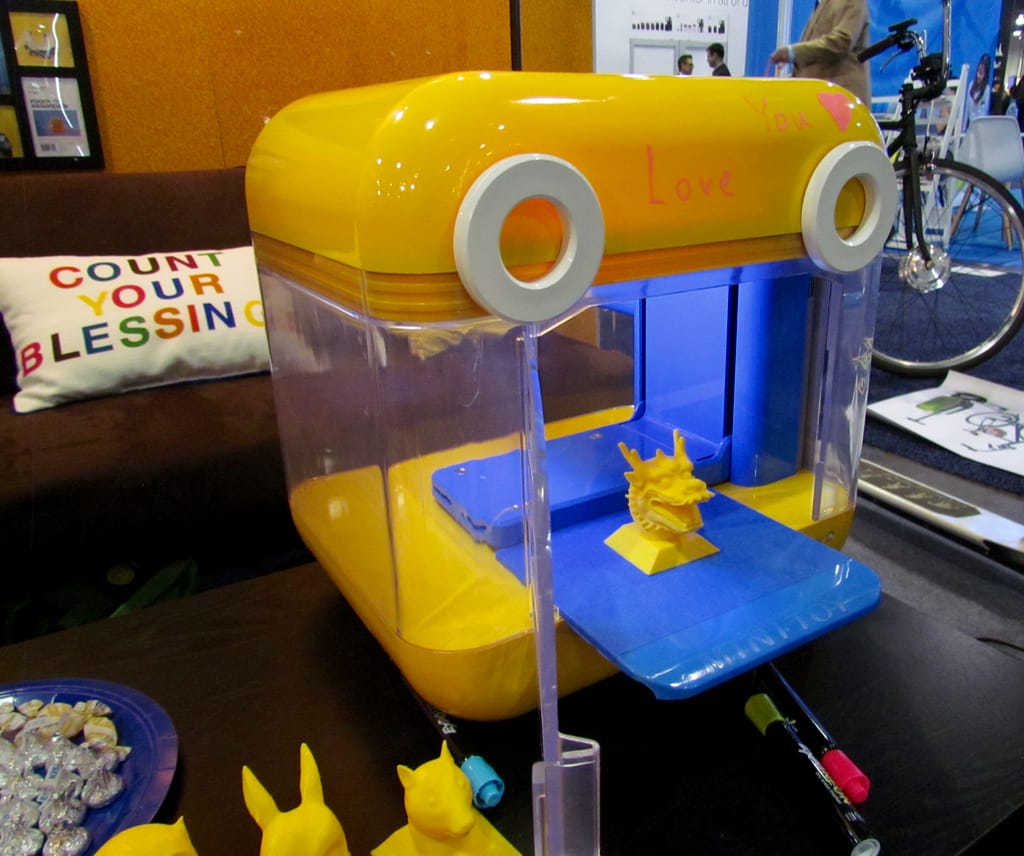
Yesterday we wrote on a new 3D printer for kids, but is this really a serious market?
Years ago when inexpensive desktop 3D printers emerged the idea was to put them in “every home”, at least according to a couple of major printer manufacturers.
That didn’t become the case due to the complexity of operations of the generally unreliable equipment of the day, the drastic lack of appropriate 3D models to print and, of course the price of the equipment and materials.
But amidst that confusing time there was the notion that these machines could, if properly designed and supplied with 3D models, could be the ultimate kids toy: one that makes your own toys!
While the general “consumer” 3D printing market mostly collapsed, several niche companies continue to pursue the children’s 3D printer market on this basis.
I’ve seen several machines emerge that included features specific to children’s operation scenarios:
- Simplified operation (one touch printing)
- Use of an app for control (rather than a complex panel or confusing software)
- Built in library of tested 3D models (as opposed to frustratingly rummaging through Thingiverse)
- Sealed build chambers with locking doors to prevent “accidents”
- Low temperature materials
- Integrated air filter to capture noxious fumes
- Colorful cases and product names
- Online sharing library of 3D models
- Integrated simple 3D design tools
Probably half a dozen or so manufacturers have come out with variants on these properties. And they keep emerging, as most recently we’ve seen with Toybox. I wrote some thoughts about children using 3D printers last year, and there are definitely some challenges.

My question is this: is this really a viable market for 3D printers? Is that why entrepreneurs persist on engaging it?
My initial thought is that it is likely a niche market, at least for the moment. There have been sufficient attempts at it now, more than enough to “catch on”, if there were something to “catch”.
The market would work well if children’s 3D printers were seen to be a viable device that parents could understand their children would actually use.
But today’s children, like those of the past, are fickle and often tire of toys and move on to other things. That’s why you frequently see a big name toy gain a lot of buzz, only to die out completely a year later. I’d almost be afraid to see a huge buzz on children’s 3D printer, as I would expect it to fade quickly after some months.
For now it seems that children’s 3D printing will be a niche market unless someone drastically changes the equation with new technology or approach. That might be in print speed, or perhaps a commercial linkage to 3D models that might attract kids more easily.

